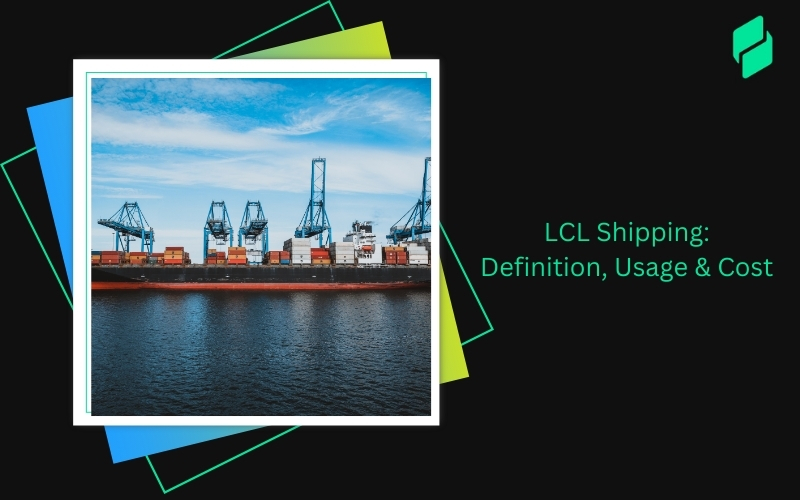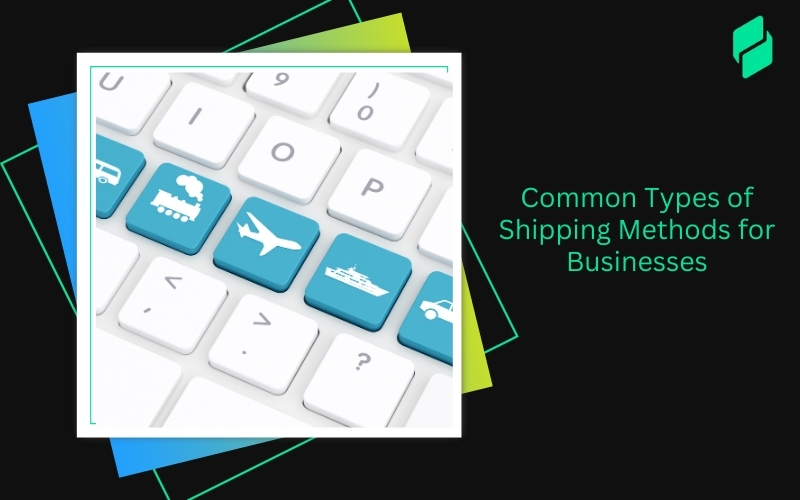Optimize your business: use unlimited savings with Pazago fulfilled now!
Get Started ->Inland marine insurance protects valuable goods and equipment in transit or off-site.
Understanding the cost of this coverage is essential for small businesses and contractors to safeguard assets and manage financial risks.
So, how much does inland marine insurance cost in 2024?
The answer depends on several factors, including the type of business, coverage limits, and the value of the property insured.
In this guide, we'll explore the key cost factors and help you determine the right coverage for your needs.
What Is the Average Cost of Inland Marine Insurance?
The average cost of inland marine insurance can vary depending on several factors, such as the size of the business, the value of goods, and specific risk factors. Here's a breakdown:
- Average annual costs typically range from $500 (₹41,500) to $3,000 (₹2,49,000) for small businesses and contractors.
- Costs will vary based on individual business needs, coverage limits, the value of the insured property, and the business's overall risk profile.
By understanding these factors, small business owners and contractors can better assess the cost of their inland marine insurance, ensuring they get the right protection at a price that fits their budget.
Also read: Understanding Insurable Interest In Marine Insurance Contracts
How Does the Type of Inland Marine Insurance Affect the Cost?
The type of inland marine insurance significantly affects the cost of the policy. Here's a breakdown of the factors influencing the cost for each type of inland marine insurance:
1. Contractor's Tools and Equipment Insurance
The cost of contractor's tools and equipment insurance is influenced by:
- Equipment value: The higher the value of the equipment, the higher the premium.
- Usage frequency: Equipment used frequently is more likely to be damaged or stolen, increasing the premium.
- Risk of theft or damage: Equipment stored in high-risk areas or used in hazardous conditions will increase the premium.
2. Bailee's Customer Coverage
The cost of bailee's customer coverage is influenced by:
- Goods' value: The higher the value of the goods, the higher the premium.
- Storage duration: Longer storage periods increase the risk of damage or loss, resulting in a higher premium.
- Risk of damage/loss: Goods stored in high-risk areas or handled carelessly will increase the premium.
3. Installation Floater Insurance
The cost of installation floater insurance is influenced by:
- Materials' value: The higher the value of the materials, the higher the premium.
- Project duration: Longer projects increase the risk of damage or loss, resulting in a higher premium.
- Risk factors: Projects with higher risk factors, such as construction in hazardous areas, will result in a higher premium.
4. Builder's Risk Insurance
The cost of builder's risk insurance is influenced by:
- Project value: The higher the value of the project, the higher the premium.
- Location: Projects located in high-risk areas, such as flood zones, will result in a higher premium.
- Duration: Longer projects increase the risk of damage or loss, resulting in a higher premium.
- Risk of damage: Projects with higher risk factors, such as construction in hazardous areas, will result in a higher premium.
5. Motor Truck Cargo Insurance
The cost of motor truck cargo insurance is influenced by:
- Cargo value/type: The higher the value or risk of the cargo, the higher the premium.
- Travel distance: Longer travel distances increase the risk of damage or loss, resulting in a higher premium.
- Vehicle type: The type of vehicle used to transport the cargo affects the premium, with more secure vehicles resulting in lower premiums.
- Risk factors: Cargo transported in high-risk areas or handled carelessly will result in a higher premium.
Also read: Understanding the Basis of Valuation in Marine Cargo Insurance
How Policy Limits Affect the Cost of Inland Marine Insurance
The policy limits of inland marine insurance significantly impact the cost of the policy. Here's a breakdown of how policy limits affect the cost:
Higher Policy Limits Lead to Higher Premiums
- The higher the policy limit, the higher the premium. This is because the insurer is taking on more risk and is more likely to pay a larger claim.
- Policyholders who choose higher policy limits need to be prepared for higher premiums.
Balancing Adequate Coverage with Affordability
- It's essential to strike a balance between adequate coverage and affordability. Policyholders need to ensure they have sufficient coverage to protect their goods or equipment, but they also need to consider the cost of the premium.
- Policyholders should assess their risks and determine the minimum coverage required to protect their assets.
Coverage Limits Should Cover Potential Claims
- The coverage limit should be sufficient to cover potential claims. If the policy limit is too low, policyholders may be left with out-of-pocket expenses in case of a claim.
- Higher-value items cost more to insure because they require higher coverage limits. Policyholders must consider the value of their goods or equipment when determining their coverage limits.
Also read: Understanding Marine Cargo Insurance and Freight Liability
How Does Your Industry Impact the Cost of Inland Marine Insurance?
Your industry can significantly impact the cost of inland marine insurance. Here's a breakdown of how different industries affect the cost:
Higher-Risk Industries Face Higher Premiums
- Industries that involve high-risk activities, such as construction, manufacturing, or transportation, are more likely to face higher premiums. These industries are more prone to accidents, theft, and damage.
- Policyholders in higher-risk industries must be prepared for higher premiums to account for the increased risk.
Lower-Risk Industries May Benefit from Lower Premiums
- Industries that involve lower-risk activities, such as office work or consulting, may benefit from lower premiums. These industries are less prone to accidents, theft, and damage.
- Policyholders in lower-risk industries may be able to negotiate lower premiums due to the reduced risk.
Industries with High-Value Goods or Equipment
- Industries that involve high-value goods or equipment, such as technology businesses or wholesalers, may pay more for inland marine insurance. These industries require higher coverage limits to protect their valuable assets.
- Policyholders in these industries must consider the value of their goods or equipment when determining their coverage limits and premiums.
Also read: Comprehensive Guide On Marine Insurance: Clause, Coverage
Factors to Consider for Cost-Effective Inland Marine Insurance
When purchasing inland marine insurance, several factors must be considered to ensure cost-effectiveness. Here's a breakdown of the key considerations:
Protecting Capital Investments
- Protecting capital investments such as tools and equipment, which are critical to business operations, is essential.
- Inland marine insurance can provide financial protection against loss or damage to these investments, ensuring business continuity.
Benefits of Inland Marine Policies
- Special form insurance: This type provides comprehensive coverage for your goods or equipment without listing specific perils.
- Replacement cost valuation: This feature ensures that you receive the full replacement value of your goods or equipment in the event of a loss rather than their actual cash value.
- Favourable co-insurance clauses: These clauses can reduce your out-of-pocket expenses in the event of a claim.
Key Features to Look for in a Policy
- Low deductibles: Lower deductibles can reduce your out-of-pocket expenses in the event of a claim.
- No higher deductible for theft: This feature ensures that you don't face a higher deductible in the event of theft, which can be a significant risk for many businesses.
- Understanding 'actual cash value' vs. replacement value: Understanding the difference between actual cash value and replacement value is essential to ensuring adequate coverage.
Also read: Inland Marine And Ocean Marine Insurance Comparison: Coverage, Benefits, Difference.
How Can You Save Money on Inland Marine Insurance?
Saving money on inland marine insurance is crucial for businesses to minimise expenses and maximise profits. Here are some ways to save money on inland marine insurance:
Bundle Policies
- Bundling inland marine insurance with other business insurance policies, such as general liability or property insurance, can qualify you for discounts.
- Insurance companies offer discounts to policyholders who purchase multiple policies from them, as it increases their business and reduces administrative costs.
Risk Management Practices
- Implementing risk management practices can help minimise losses and reduce premiums.
- Risk management practices include regular equipment maintenance, secure storage, and employee training to prevent accidents and theft.
- You can negotiate lower premiums with your insurance company by reducing the risk of losses.
Review and Update Coverage
- Regularly review and update your inland marine insurance coverage to align with your evolving business needs and risk profiles.
- As your business grows or changes, your insurance coverage may need to be adjusted to ensure adequate protection.
- Reviewing and updating your coverage can help you avoid over-insuring or under-insuring your business, saving you money on premiums.
Annual Premium Payments
- Paying the annual premium instead of monthly payments can qualify you for a discount.
- Insurance companies offer discounts to policyholders who pay their premiums annually, as it reduces their administrative costs.
- You can save money on your inland marine insurance premiums by paying the annual premium.
Also read: Exploring Different Types of Marine Insurance Clauses
Inland Marine Coverage: Affordable Protection for Property on the Move
Inland marine coverage protects businesses with property on the move, such as equipment, tools, or goods. This type of insurance is designed to cover property not fixed to a specific location, unlike commercial property insurance, which only covers fixed locations.
What is Covered?
Inland marine coverage extends to equipment and property that is:
- Brought to job sites
- Stored off-site
- Used at other locations
This type of coverage is particularly important for businesses with valuable equipment or goods that are frequently moved or transported.
Real-Life Examples
Inland marine coverage can provide financial protection in situations such as:
- A landscaper's tools being stolen from a job site
- Vending machines being damaged by vandalism at a remote location
- Construction equipment being damaged during transportation to a job site
Why Commercial Property Insurance is Not Enough
Commercial property insurance only covers property fixed to a specific location, such as a building or office. It does not provide coverage for property moved or transported to different places. Inland marine coverage fills this gap by protecting property on the move.
Maximising Inland Marine Insurance Coverage with Pazago's Global Solutions

Inland marine insurance is essential for protecting valuable property frequently moved or transported. Whether it's contractor equipment, goods in transit, or materials on job sites, having the right coverage is crucial for small businesses and contractors.
Regarding managing trade and logistics, Pazago offers powerful tools to streamline processes and reduce costs. With Pazago, businesses can benefit from:
- Digitally managing the trading journey from procurement to fulfilment with real-time tracking and clear communications.
- Streamlined purchase orders, centralised information, and elimination of paperwork.
- Risk identification and proactive solutions to address supplier delays and bottlenecks.
- Real-time trade alerts, market insights, and simplified trade communication with all parties.
- Comprehensive, real-time cargo tracking across 180+ shipping companies from 110+ countries.
- Secure, reliable international payments with the lowest Forex rates and priority clearance.
Incorporating Pazago’s advanced features into your trade operations will enhance your inland marine coverage strategy, ensuring cost-effective and efficient global business expansion.


.png)








